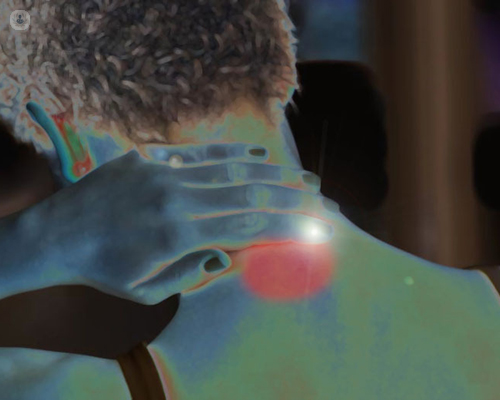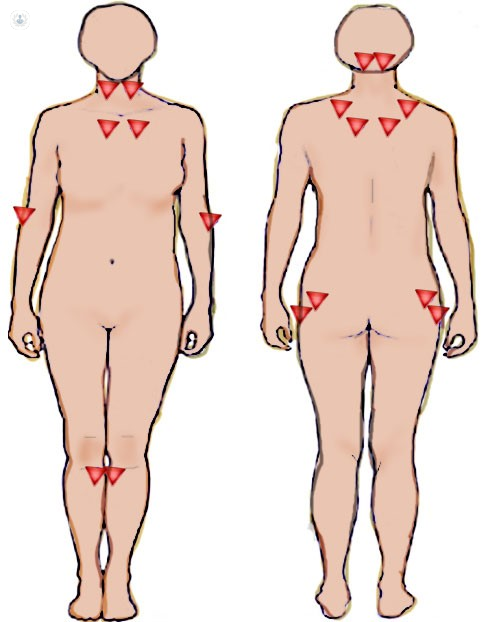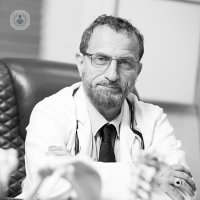Fibromyalgia: where are the tender points on the body?
Autore:Fibromyalgia is a chronic condition that causes pain all over the body, which can be debilitating for those who live with the disease. Flare-ups may happen when many different factors work together, such as an infection, sleep disturbance, weather or diet changes, or even heavy exercise. Fibromyalgia may also be hereditary or stem from painful diseases like rheumatoid arthritis, lupus or because of low levels of growth hormone.

Dr Dhiya Houssien is a leading London rheumatologist who has over 20 years’ experience in treating the condition. Here, he explains how to manage a flare-up of fibromyalgia, the eight tender points where it occurs on the body and whether emotional trauma has an impact.
What are the symptoms of fibromyalgia?
Widespread pain and fatigue in the muscles and ligaments all over the body is the most prominent symptom of fibromyalgia. “Fibro fog” is common and refers to the inability to concentrate, memory loss and depression. Many patients may suffer from morning stiffness, headaches, irritable bowel syndrome and numbness. In addition, ACR guidelines recommend confirming the diagnosis of at least 11 out of 18 specific tenderness for at least three months in the specific bilateral points, as demonstrated in the figure.

Where are the 8 tender points of fibromyalgia on the body?
Tender points are the sensitive areas on the body that are painful when pressure is applied. The eight tender points, which occur on both sides of the body, include the upper chest, the back of the head, outer elbows, knees, hips and tops of the shoulders as depicted in the image to the right.
Is there any association between fibromyalgia and emotions?
Emotional trauma and stress initiate the symptoms and are known to flare-up the disease. Furthermore, the stress from fibromyalgia's pain and fatigue can cause anxiety and social isolation. The prevalence of depression is three times higher than someone without fibromyalgia. Women aged between 20-40 years old are affected seven times more than men.
How can fibromyalgia be managed?
Improving lifestyle, relaxation techniques and exercise, including water aerobics are the cornerstones in the management of fibromyalgia. A traditional method like medicine is preferably used along with complementary methods, including acupuncture for pain relief. Some foods such as sugar, unhealthy fats and alcohol may worsen symptoms by increasing inflammation, aggravating food sensitivities, or both.
How is fibromyalgia treated?
Medications that increase the activity of serotonin and norepinephrine may correct the patient’s functional deficit along with diet and several vitamins. In addition, I treat my patients using laser acupuncture method that I developed to stimulate the release of serotonin and endorphins resulting in pain relief and mood enhancement. About 50% of my patients improve after the first session. Some patients do not need to take NSAID or antidepressants after a few days from using my new method.


